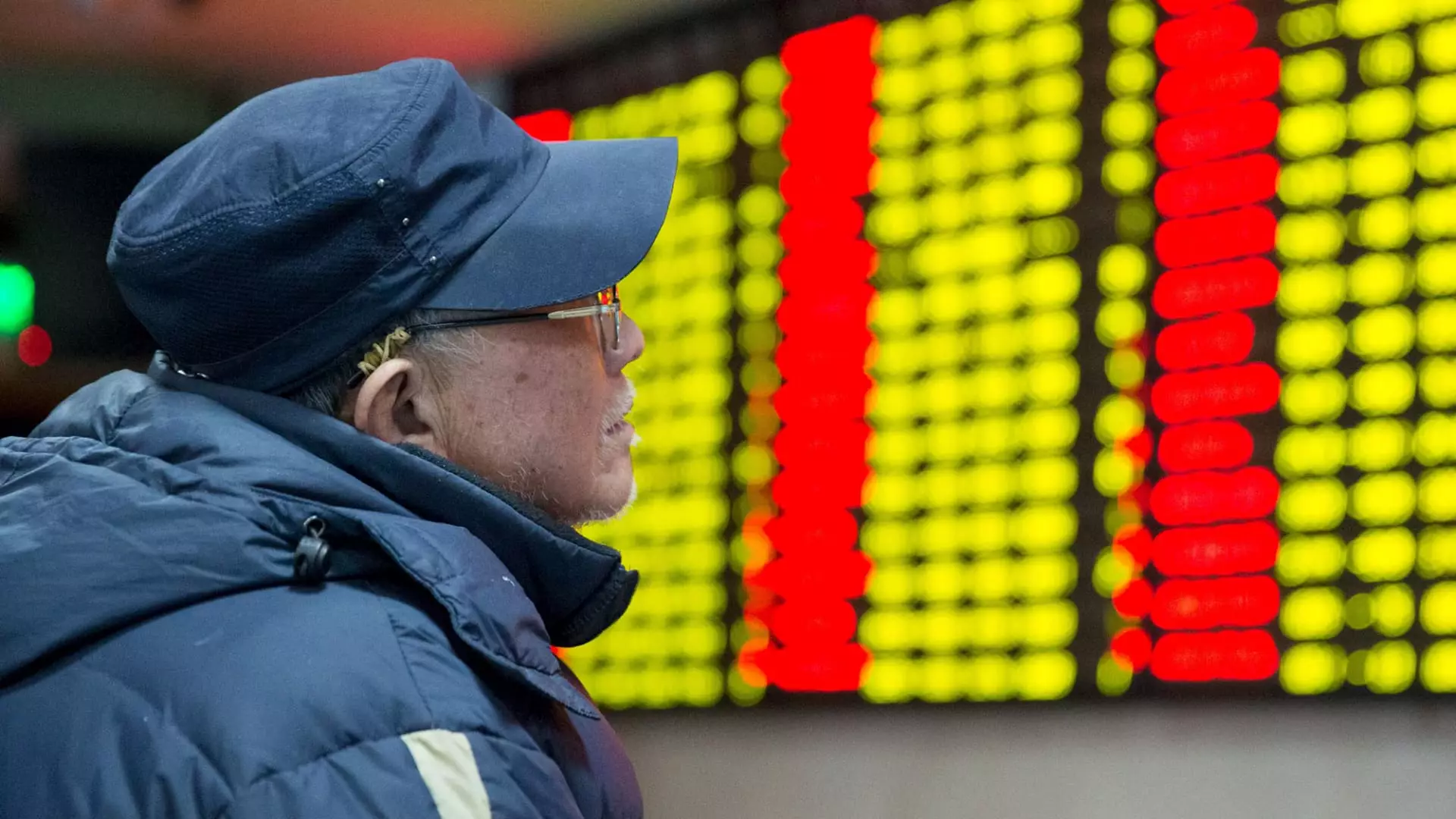In a surprising turn of events, China’s stock market has witnessed a dramatic surge following the government’s announcement of measures aimed at bolstering the economy. The CSI 300 index, which encompasses a diverse array of stocks from the Shanghai and Shenzhen exchanges, experienced a remarkable jump of over 15% last week, marking its most significant weekly gain since the tumultuous financial landscape of 2008. This sharp recovery comes in stark contrast to earlier this year, when the index had plummeted to six-year lows. The recent uptick highlights a shift in sentiment, drawing the attention of hedge funds and investment strategists who would have previously deemed such a trade as overly contrarian.
JPMorgan’s equity strategist, Wendy Liu, led a report underscoring the potential for quality stocks to exhibit resilience, stating, “Shares of quality businesses will bottom well ahead of final index bottoms.” This assertion resonates with many in the investment community, prompting a focused examination of undervalued stocks as analysts navigate a complex market landscape. Within their recommendations, JPMorgan identified three stocks that appear poised for short-term growth: Tsingtao Brewery, a major player in the beverage sector; Miniso, a U.S.-listed retailer; and Zhejiang Dingli, a machinery company also listed in Shanghai. Their research emphasizes the importance of investing in quality enterprises that are currently trading at appealing valuations, even as uncertainty looms over broader economic recovery.
The renewed appetite for Chinese equities has not gone unnoticed in the investment circles. Bernstein director Rupal Agarwal articulated a cautious yet optimistic outlook, suggesting that now might be an opportune moment to enhance exposure to China’s markets. “We would wait to see clear signs of inflection on property/consumer sentiment and earnings growth to become more positive,” Agarwal noted, signifying the critical role that consumer confidence and sustainable growth metrics would play in determining the market’s trajectory. Analysts have turned their attention to companies displaying robust earnings momentum, including Tal Education, an after-school operator, and Seres, an electric vehicle manufacturer.
Furthermore, the sentiments expressed by well-known figures in the investment realm, such as billionaire hedge fund manager David Tepper, add a layer of credibility to the shifting narratives around Chinese stocks. Tepper’s recent purchases of Chinese equities, despite apprehensions about U.S. tariff policies, reflect a growing conviction that domestic stimulus measures in China could outweigh geopolitical uncertainties. His assessment of the current market—where Chinese stocks present favorable price-to-earnings ratios alongside robust growth rates—contrasts sharply with higher valuations seen in U.S. markets. With commentaries highlighting that major companies in China are trading at single-digit multiples, it’s a compelling proposition for international investors.
The pivotal moment for this market renaissance can be traced back to announcements made by the People’s Bank of China (PBOC) regarding interest rate cuts, which were unveiled alongside high-level discussions on fiscal and monetary policy chaired by President Xi Jinping. These policy shifts aim to provide a sturdy foundation for the beleaguered real estate sector and rejuvenate consumer sentiment, further lifting the spirits of investors. As reported by Goldman Sachs, there has been a noteworthy increase in short-term trading activities in Chinese stocks, suggesting growing bullish sentiment. Despite the cautious optimism, analysts underscore the need for vigilance, as formalized details around fiscal policy remain ambiguous, and broader market dynamics might still pose challenges.
The revival in interest toward Chinese stocks must be tempered with an understanding of the inherent risks. Investors have previously shied away from the Chinese market due to sluggish growth rates and escalating debt concerns, exacerbated by external tensions, particularly with the United States. It is also critical to note that retail investors dominate trading in mainland stocks, adding another layer of complexity to market movements. As sentiment shifts, historical patterns reveal that market bottoms often coincide with policy changes, but the compilation of sustained gains requires a strategic approach toward consolidation after initial rebounds.
China’s stock market appears to be on a tentative path toward recovery, fueled by strategic government interventions and an influx of investor enthusiasm. While the uplifting movements in indices and stocks offer promise, it is equally important to remain discerning about the sustainability of this momentum. Ongoing policy adaptations and market reactions over the coming months will be integral to shaping long-term investment strategies in this evolving landscape. As investors recalibrate their outlook toward China, the potential for growth remains, albeit accompanied by a need for cautious optimism in the face of evolving economic realities.

